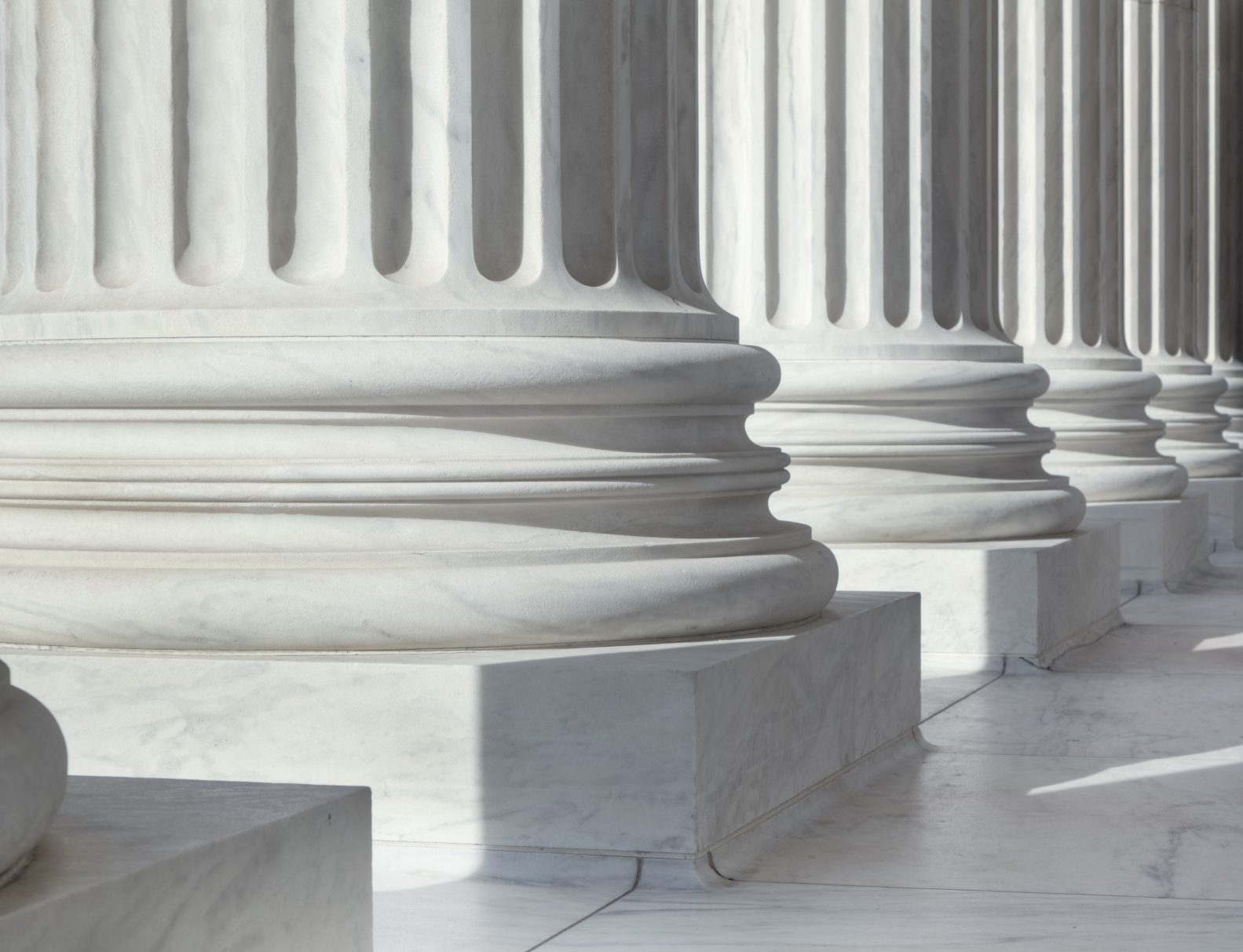Not many appeals are scheduled to be heard over five days in the Supreme Court of New Zealand. But this was never going to be an ordinary appeal of a civil matter. Because at issue was whether a group of directors, including a former Prime Minister, were liable for the collapse of one of New Zealand’s largest construction companies and, if so, how the compensation they are liable for should be calculated. And in an ironic twist, the hearing was held in a building that company built.
Over the course of the week, the Chief Justice, together with Justices Young, Glazebrook, O’Regan and France, listened to the lawyers acting for the former directors of Mainzeal Property and Construction Limited, who sought to convince them that the directors did not breach their duties under the Companies Act 1993 and are not liable to creditors who are collectively said to be owed over $110 million. The directors are appealing a decision reached in the Court of Appeal in March 2021 that found they had breached the Companies Act.
After five days, the five judges reserved their decision. We have provided a summary of the issues and arguments as reported by court and business reporters given the level of interest the High Court and Court of Appeal decisions, and this subsequent appeal, have generated.
A quick refresher …
Mainzeal was a well-known New Zealand construction company, building everything from large-scale residential developments to significant commercial projects.
In the early 2000s, Mainzeal was wholly owned by a Chinese investment consortium registered in Bermuda that had significant investments in China. That parent company was represented on the Mainzeal board by Richard Yan. The other directors from the mid-2000s were Dame Jenny Shipley (the chairperson), Peter Gomm, and Clive Tilby.
Over the course of several years, the parent company took funds of approximately $40 million from Mainzeal to acquire substantial assets in China. The parent company, mostly through Mr Yan, promised underlying assistance in support for Mainzeal to continue as a going concern, including to provide “letters of support” in which it said it would provide financial assistance when needed.
Following a difficult trading period in 2012, when Mainzeal experienced significant cash flow issues and also issues with a significant construction contract, Mr Yan and the parent company failed to satisfy the prior assurances they had made, and the company went into liquidation.
The liquidation process left an approximately $110m shortfall owing to unsecured creditors. The liquidators commenced a High Court proceeding against the directors alleging they traded recklessly (breach of section 135 of the Companies Act) and they allowed Mainzeal to incur obligations when they did not have reasonable grounds for believing the company would be able to perform those obligations when required (breach of section 136 of the Companies Act).
In 2019 the High Court held the directors had traded recklessly and had breached section 135, but they had not breached section 136 (the particular obligations said to have been incurred were not in the evidence). The Court found the directors were cumulatively liable for $36 million. In doing so, the Court distinguished between Mr Yan and the other directors: Mr Yan was held to be liable for all of the $36 million, with each of Dame Jenny, Mr Gomm and Mr Tilby being liable for $6 million each, jointly with Mr Yan.[1]
In 2021 the Court of Appeal agreed the directors traded the company recklessly up to January 2011 in breach of section 135, but no compensation was recoverable for that breach because there was no net deterioration in the company’s position. However, the Court also held the directors breached section 136 when they entered into further obligations without reasonable grounds to believe Mainzeal could meet those obligations. They ordered the case to be sent back to the High Court to determine the size of the penalty.[2]
The competing positions in the Supreme Court
Both sides appealed to the Supreme Court.
The lawyers for Dame Jenny Shipley, Mr Gomm and Mr Tilby went first during the appeal hearing. They were followed by the lawyers for Mr Yan. The liquidators’ lawyers, funded by litigation funder LPF Group, then spent much of the balance of the week presenting their case.
During the course of the week, the directors are reported to have made the following principal submissions:
The Court should have due regard to the industry experience collectively held by directors. (In the case of Mainzeal, this amounted to over 70 years between two of the directors in particular.)
The experienced directors developed a strategy to save the company and they had a rational basis for believing the strategy could have worked:[3]
“This was a marginal company, not an unsalvageable company. They were entitled to carry on trading, including having regard to the consequences, if they stopped trading.”
“If you have honest and good faith decisions by people who have been diligent and who have knowledge then in those circumstances you would not be expecting to find a court saying no we disagree.”
The assurances from the parent company were clear and definite, even though they were not formalized, and the directors went back several times for clarity.
The directors exercised commercial judgement, which is what the Companies Act is designed to facilitate. The High Court and Court of Appeal decisions had created a “massive gap” between the risk and reward of being a director and have “created a minefield for directors”.
In response, the liquidators are reported to have said:
The directors failed to recognise the crisis the company was in and continued to trade despite only vague assurances that its parent company would pay back over $40 million worth of loans. It is not good enough for an insolvent company to have only verbal or even written assurances of financial support:[4]
“If you’re balance sheet insolvent but for the support of the debtors, then you need to make sure that [the support] is in writing and enforceable legally and practically. None of that existed here.”
By the end of 2010, the directors should have realised attempts to salvage the cash-strapped company had failed, and there was significant risk at all times after January 2011.
There is enough evidence for the Supreme Court to rule on compensation. The liquidators discussed two sums – $39.8 million and $58.1 million – depending on the Court’s approach to assessing damages. The liquidators also said that Dame Jenny Shipley should pay more than the other directors because she was chairwoman and, as a former prime minister, she would have given people dealing with Mainzeal more comfort that they were dealing with a reputable company.
The decision is reserved.
The importance of the case
In these ongoing, uncertain economic times, a ruling from New Zealand’s top court on what directors should be doing when a company is facing insolvency is very relevant.
Regarding the current state of the law, former High Court judge, Paul Heath QC, has said:[5]
“Should directors always be at risk of personal liability if, in those circumstances, things do not work out as they had expected?”
The Court of Appeal also commented that the current laws governing insolvent trading are unsatisfactory and need to be reviewed:
“The legislation governing insolvent trading in New Zealand is unsatisfactory in a number of respects. The Act should be reviewed to ensure that it provides a coherent and practically workable regime for the protection of creditors where directors decide to keep trading in circumstances where a company is insolvent or near-insolvent.”
The Institute of Directors agrees and supports a review of insolvency laws, including consideration of whether a director’s current obligations are fit for current and future purposes. For its part, MBIE takes the position it wants to see what the Supreme Court decides. In the interim, the Institute of Directors general manager, Guy Beatson, says:[6]
“The case will have company directors actively considering their positions and maybe have a reduced tolerance for reasonable risks in their practice, and the operation of the entities they govern.”
For more information please contact a member of our litigation and dispute resolution team.
Disclaimer: The content of this article is general in nature and not intended as a substitute for specific professional advice on any matter and should not be relied upon for that purpose. While we make every effort to ensure the accuracy of the information contained in this article, this is a rapidly changing environment and the information will be subject to change.
[3] Rob Stock “Former prime minister Jenny Shipley and fellow Mainzeal directors seek to overturn $36 million damages at Supreme Court” Stuff (online ed, 7 March 2022); Nicholas Pointon “Mainzeal case before the Supreme Court today” Radio New Zealand (online ed, 7 March 2022).
[4] Michael Andrew “Mainzeal directors should have seen ‘writing on the wall’, court told” BusinessDesk (online ed, 9 March 2022).
[5] Victoria Young “Beyond Mainzeal and into ‘the twilight zone’” BusinessDesk (online ed, 9 March 2022).
[6] Nicholas Pointon “Mainzeal case before the Supreme Court today” Radio New Zealand (online ed, 7 March 2022).





